If you buy through our links, we may earn an affiliate commission. This supports our mission to get more people active and outside.Learn about Outside Online's affiliate link policy
The Best Insulated Midlayers for Men (2026)
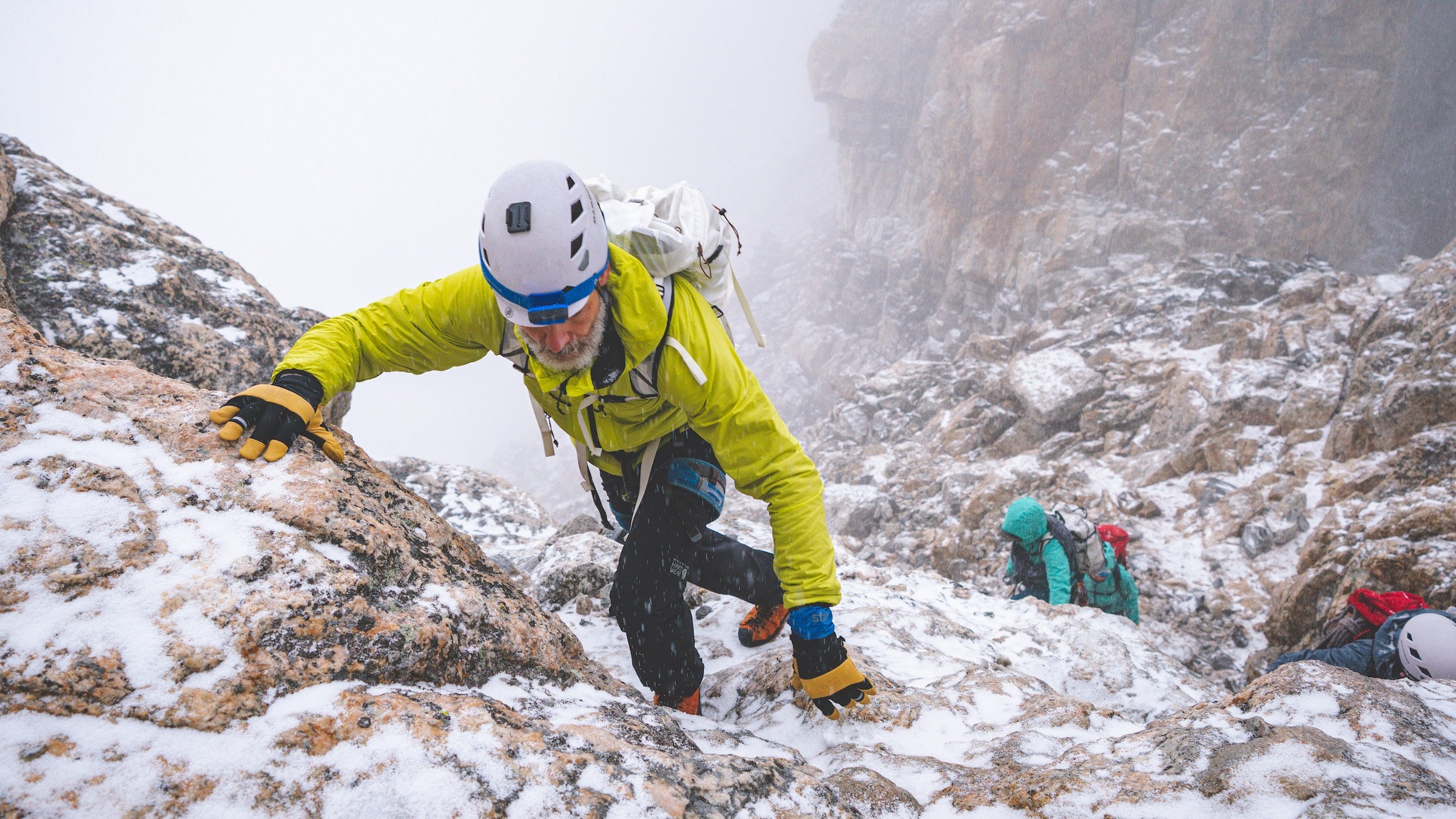
Mountain Hardwear's Kor Airshell Warm jacket. (Photo: Clayton Hermann)
In a classic winter layering system, it’s the midlayer that holds the magic. A good midlayer has to breathe, wick, and do most of the insulating for you, even when wet—a level of multitasking you would never ask of another layer. Plus, it’s needed all the time, standing on its own in fair weather and providing hidden, essential warmth under a shell in the worst conditions. With those standards in mind, we set out to find the very best midlayers, from super-breathable backcountry pieces to quilted wool jackets for frigid downhill days.
At a Glance
- Best Overall: Arc’teryx Atom Hoody ($300)
- Best for Aerobic Pursuits: Columbia Arctic Crest Hybrid Full Zip ($160)
- Most Packable: Stio Men’s Dawner ($249)
- Best Town–to-Trail: Strafe Highlands Shirt Jacket ($319)
- Most Sustainable: Ortovox Ravine Metawool 90 ($360)
- Most Versatile: Mountain Hardwear Kor Airshell Warm Hoody ($200)
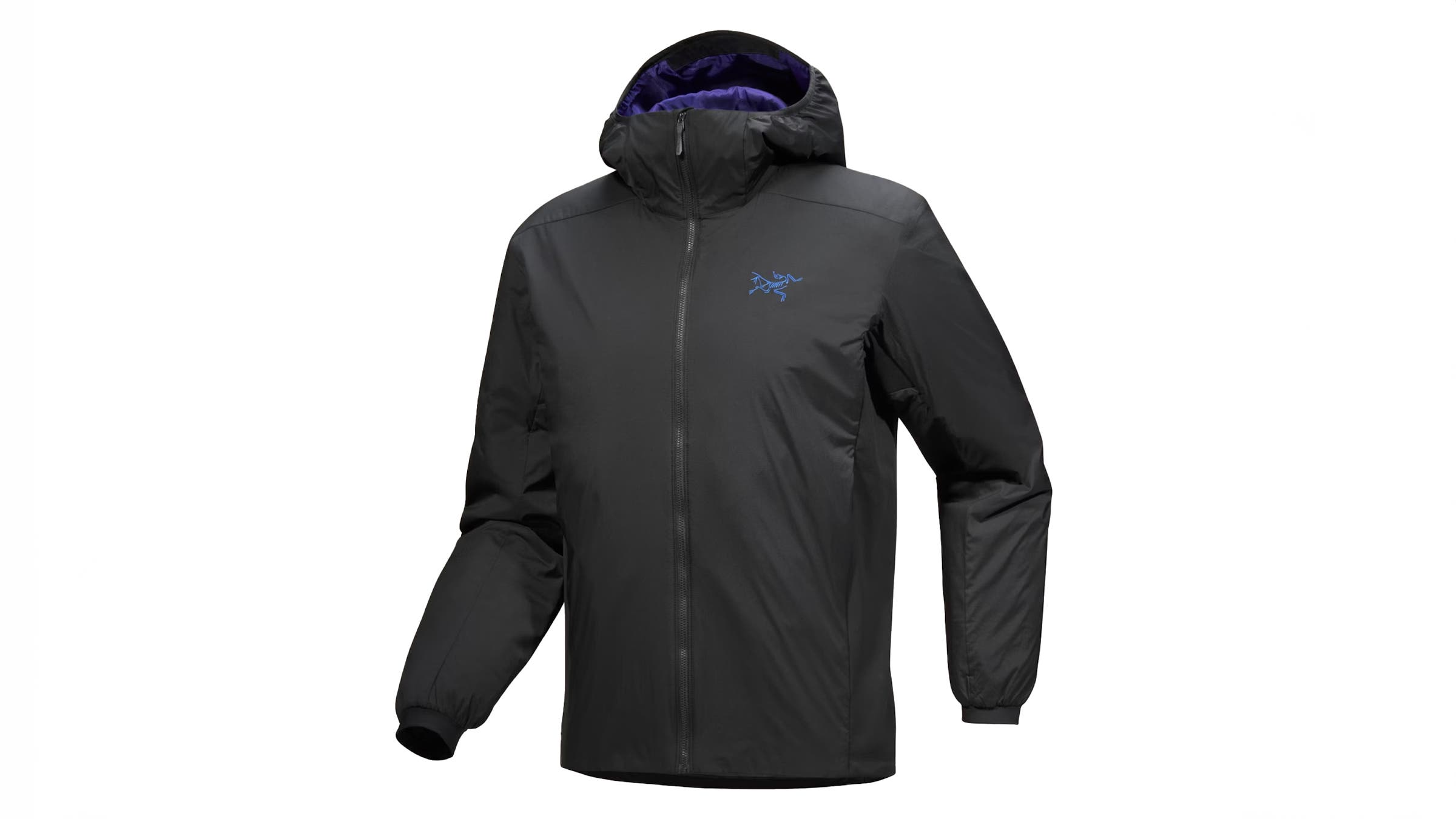
Best Overall
Arc’teryx Atom Hoody
Size Range: XS-XXXL
Weight: 12.5 oz
Pros and Cons
+ Excellent breathability
+ Very warm
+ Helmet-compatible hood
– Expensive
The Atom has been one of our favorite midlayers since its debut in 2009, with a design that’s hardly changed over the years except for sustainability upgrades. With stretchy fleece side and underarm panels bridging generous helpings of synthetic insulation in the torso, hood, and arms, it strikes the ideal balance of warmth and breathability during winter and shoulder seasons.
We found the Atom’s insulated panels—packed with 60-grams of polyester loft—plenty warm down to the teens without an outer layer while skinning and bootpacking in the Tetons. One tester, who wore his hoody ice climbing in Silverton, Colorado, called the Atom’s mix of insulation and breathable fleece “perfectly balanced.”
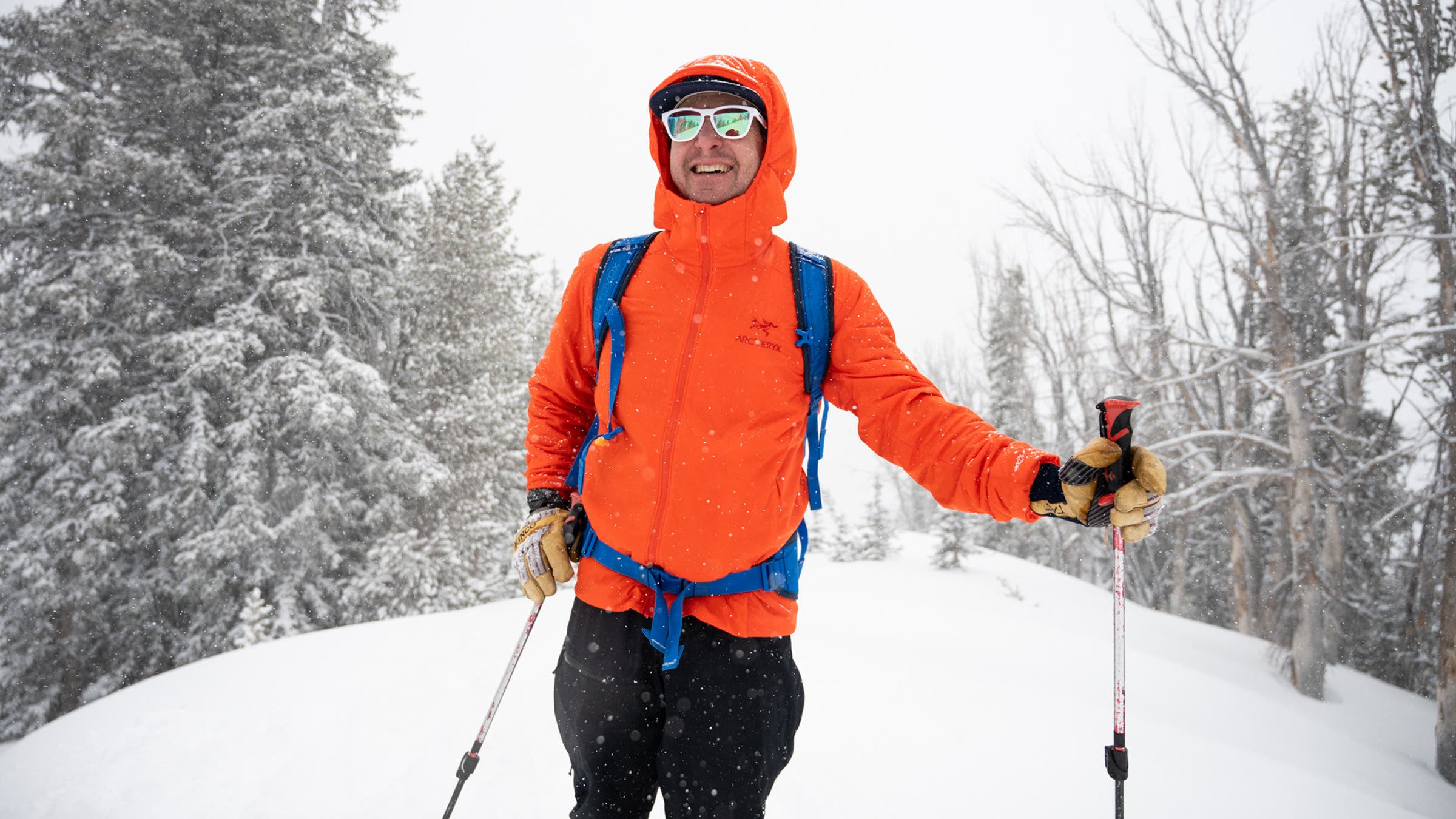
The cut is slimming but generous and fit most average-bodied testers well. The cinchable hood is big enough for a helmet, which came in handy when temps plummeted during one Idaho-based tester’s fat bike ride in the Tetons. Arc’teryx manages to keep this jacket a lightweight 12.5 ounces by paring back features (just two hand pockets and a single internal chest pocket) and using a 20-denier ripstop nylon shell. But our Idaho-based tester still found the jacket plenty durable for lugging heavy aluminum rafting gear on late-season Salmon River trips, and water-resistant enough for drizzly November training runs thanks to a DWR finish.

Best for Aerobic Pursuits
Columbia Arctic Crest Hybrid Full Zip
Size Range: XS-XXL
Weight: 17.6oz
Pros and Cons
+ Affordable
+ Super breathable
+ Surprisingly warmth
– No DWR finish
Hoodless midlayers are clutch in certain circumstances, like when you’re already wearing a ski jacket with an insulated hood, or for Nordic ski missions where breathability is paramount. Over a season of testing, the Arctic Crest Hybrid Full Zip was our go-to layer for both activities.
When worn without a shell, the jacket was surprisingly warm thanks to Columbia’s proprietary three-layer insulation tech, which sandwiches 40 grams of polyester between an outer solar-warmth-gathering translucent layer and a heat-retaining inner layer. It works especially well in direct sun, but even on overcast days in Sun Valley and in the French Alps, testers were comfortable wearing the Arctic Crest down to into the teens when skiing, skinning, and running. Stretchier fleece side panels and sleeves aid breathability and were welcome when reaching for a pole plant or skinning uphill. Thumb loops made pulling on outer layers a cinch.
The Arctic Crest’s real tradeoff is weight: Even without a hood, it clocks in at nearly 18 ounces—one of the heavier jackets in test. But for this jacket’s warmth and excellent price point, most testers were happy to shoulder a few extra ounces.
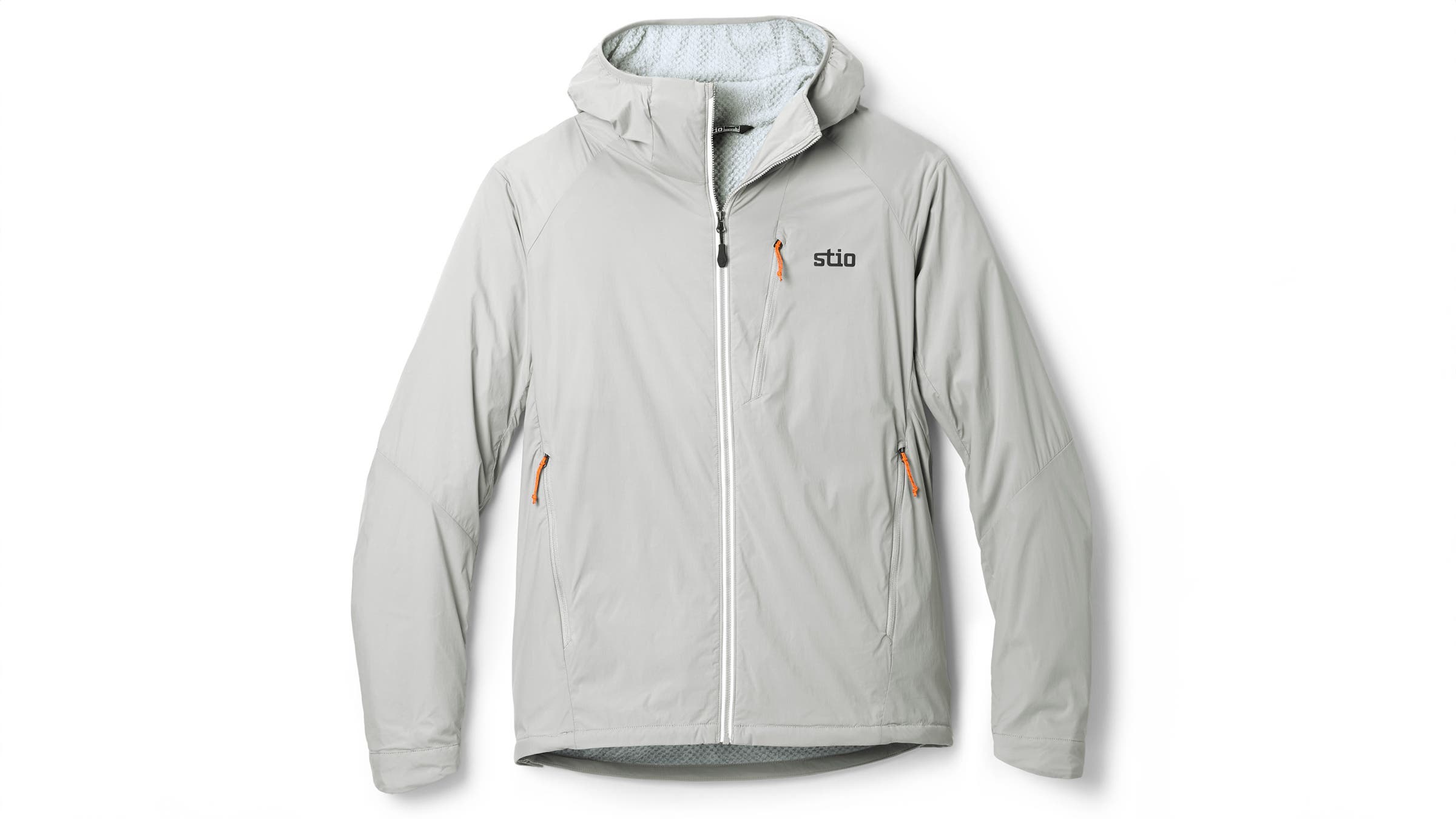
Most Packable
Stio Dawner Hooded Jacket
Size Range: S-XXL
Weight: 12.2oz
Pros and Cons
+ Great stretch
+ Very compressible
+ Good breathability
– Not the Warmest
The Dawner Hooded Jacket is basically a stretchy windbreaker with a fleece liner, making it the perfect midlayer for all four seasons in the mountains.
The nylon shell, a 20-denier blend with spandex, has a DWR finish that sheds light rain (but won’t hold up in a storm), while 100-gram Octaknit insulation—one of the lightest, most breathable polyester fleeces on the market—lines the interior. This hoody is cut generously enough to fit over thicker baselayers, and slim enough to slip under heavier outerlayers. A cinchable helmet-compatible hood and hem made it easy to batten down the hatches during cold starts on pre-dawn backcountry missions.
As simple as the Dawner is, it was one of our most-worn layers last winter, with testers reaching for it in just about any uncertain conditions. And because it packs down to the size of a grapefruit, it migrated into our Teton tester’s pack for summertime mountaineering adventures too.
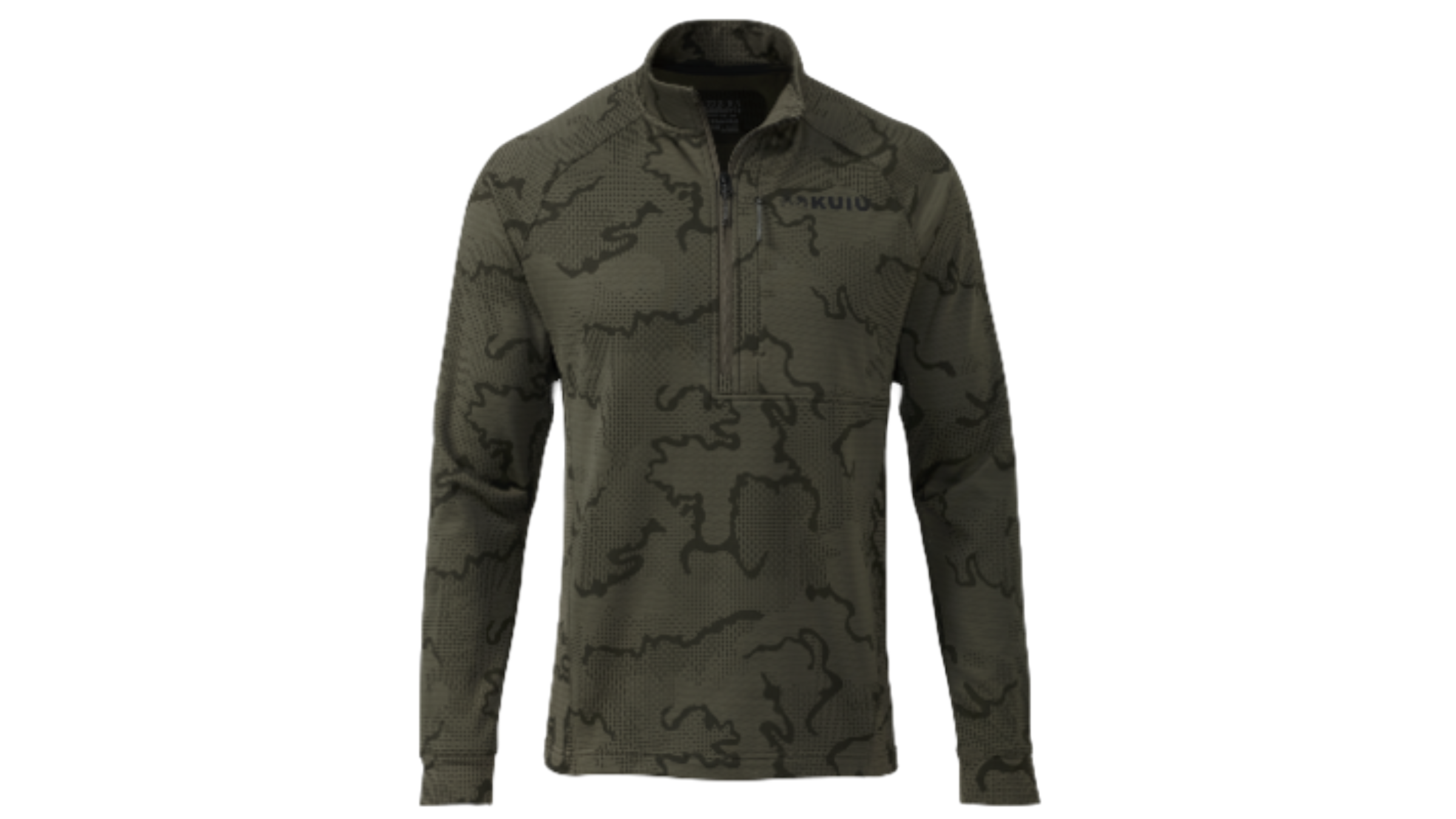
Paid Advertisement by KUIU
KUIU Ridgepoint Zip-T
This technical fleece top checks every box on the midlayer wishlist. KUIU engineered it for breathable warmth, mobility, and multi-season layering—and made it durable enough to withstand the elements. The Ridgepoint Zip-T features smart design details for cold-weather recreation, including zoned thermal construction: heavier material where you need extra warmth, and lighter fabric across the back and underarms for added breathability and reduced bulk. Comfort isn’t compromised, either. A raised collar and fitted cuffs help lock in warmth, while the stretch knit provides freedom of movement during any outing.

Best Town–to-Trail
Strafe Highlands Shirt Jacket
Size Range: S-XXL
Weight: 10.4 oz
Pros and Cons
+ Great warmth-to-weight ratio
+ City-appropriate
– Expensive
– Snaps instead of zipper
Heading out for a Colorado ski tour doesn’t mean you have to look like you’re launching a siege of K2. The classy style of the Highlands Shirt Jacket hides the fact that this is a highly-functional lightweight midlayer. Insulated with breathable Primaloft Active Evolve synthetic fill and sheathed in stretchy, DWR-coated 20-denier recycled nylon, this shirt kept testers warm and dry on winter missions across northern Idaho and the Tetons.

The snug turtleneck collar sealed in heat and fit into city-oriented gatherings better than a hoody. Numerous pockets (one buttoned chest, two hand, and two internal dump) make this a great workwear shirt, too. Our one complaint? The Highlands’ buttons offered a more casual look, but didn’t do much to block wind.
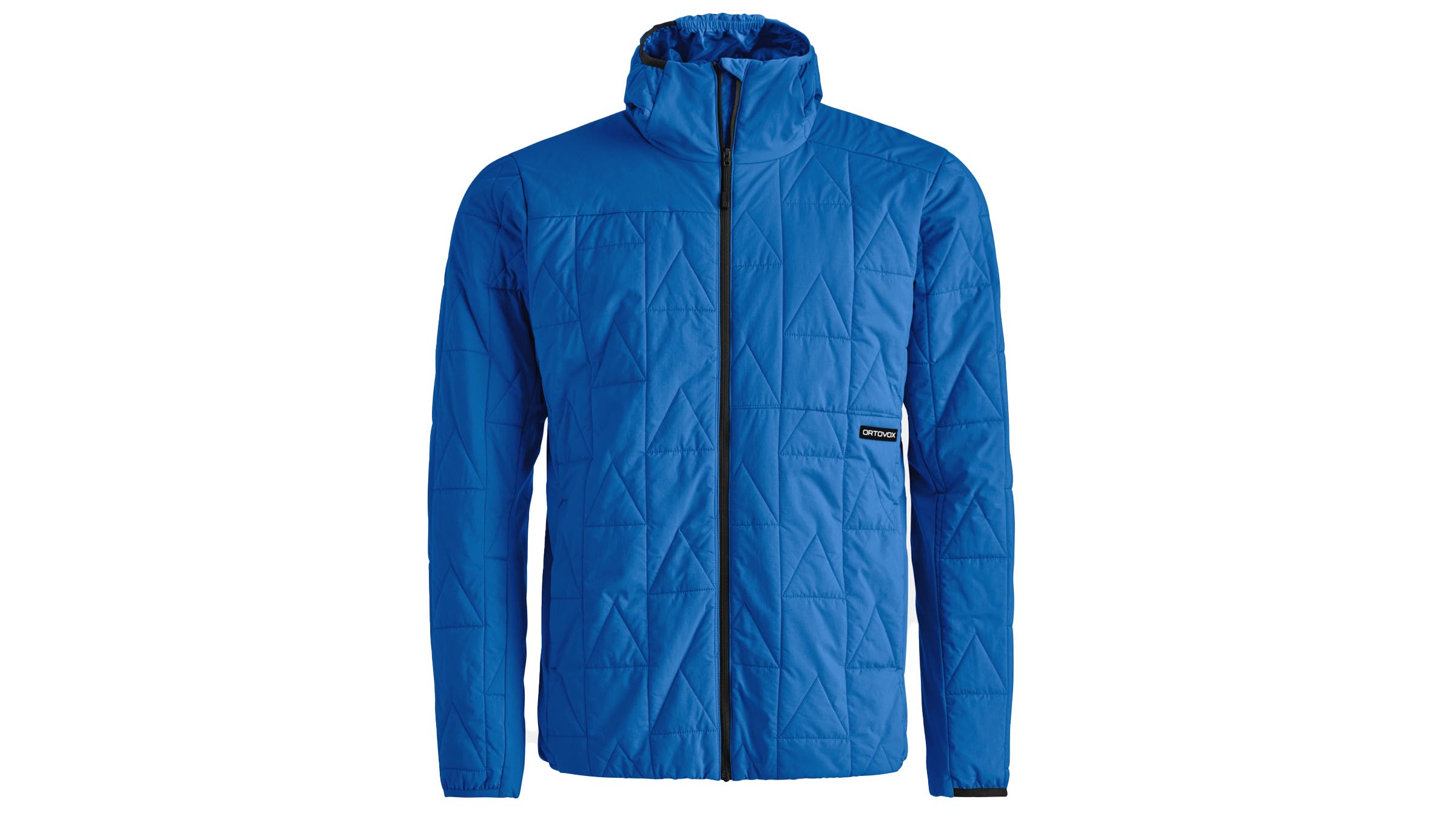
Most Sustainable
Ortovox Ravine Metawool 90
Size Range: XS-XXL
Weight: 18oz
Pros and Cons
+ Sustainable materials
+ Spacious cut
+ Odor-fighting materials
– Not packable
– Flimsy zipper
While Ortovox apparel has always delivered on its build quality and sustainability goals, its aesthetic has always veered towards a quirky Euro sensibility. The Ravine Metawool, on the other hand, is a handsome piece, with pastel colors, geometric stitching, and a rugged hand-feel. “Nice to wear something that doesn’t have that ubiquitous outdoorsy nylon sheen,” said one tester.
But looks aren’t everything. The Ravine Metawool 90 is insulated with Merino wool fiber fill blend, which means it stays warm even when wet, and doesn’t stink even after a season of sweat. That wool also gets high sustainability marks: It’s sourced sourced exclusively from sheep living in the German Alps, creating a shorter supply chain. The impressively durable polyester shell is fully-recycled, too.
The Ravine Metawool 90 was one of the warmest midlayers we tested, keeping one tester cozy yo-yoing backcountry slopes on a five-degree day. It sports a generous freeride cut that made it easy to layer beneath and was welcome by a wide range of body types. The more durable shell, large hood, and DWR finish made this the most weather-resistant midlayer in the test. Testers’ only negative feedback: The narrow-gauge zipper is tricky to operate, even without gloves.
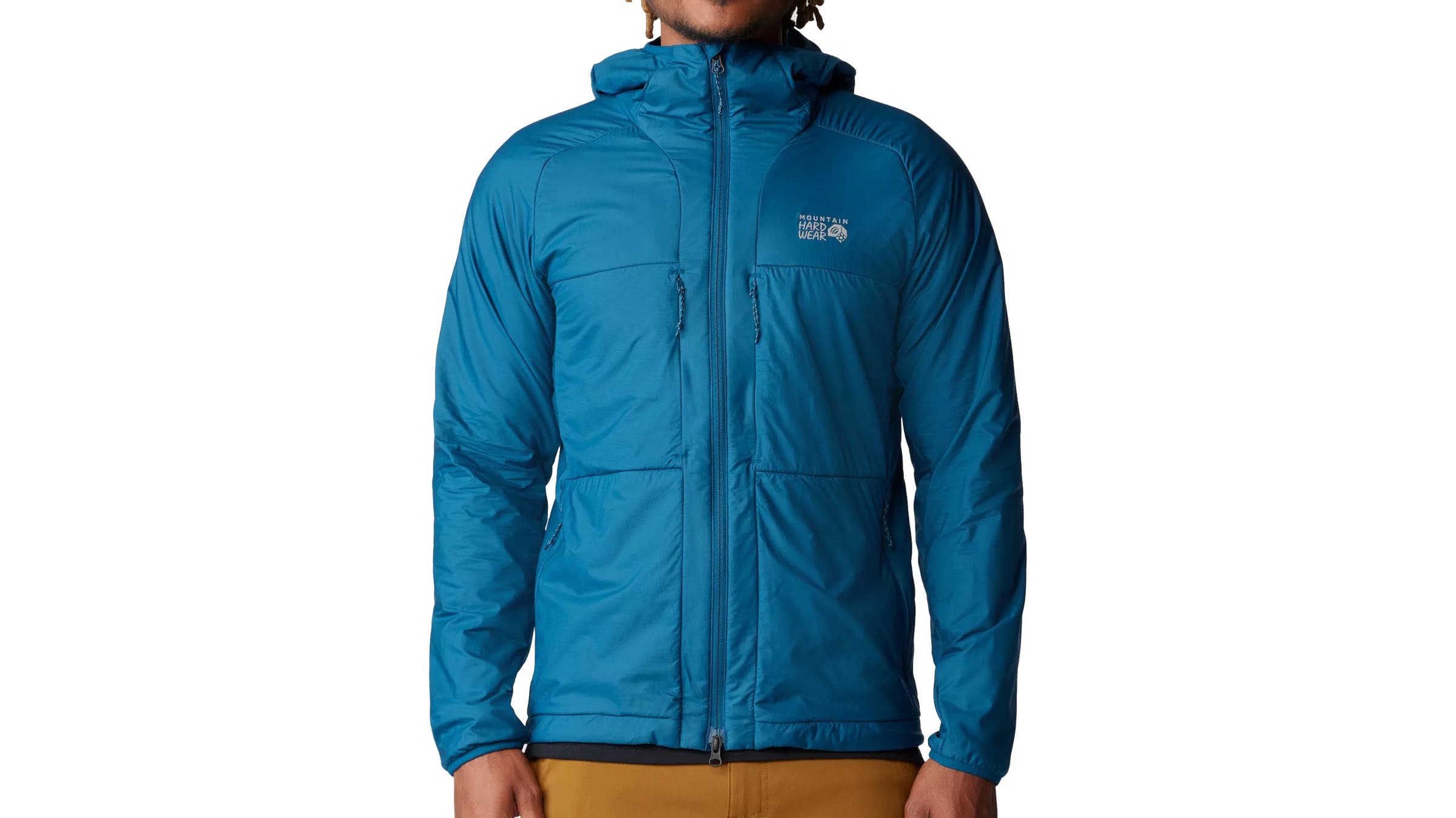
Most Versatile
Mountain Hardwear Kor Airshell Warm Hoody
Sizes: S-XXL
Weight: 11.5 oz
Pros and Cons
+ Great wicking
+ Super breathable
+ Very packable
– Not for the coldest days
– Svelte sizing
“Packing for my next trip, it’s hard to imagine leaving this layer at home,” said one tester, who used the Kor Airshell on backcountry ski missions in Colorado’s Mosquito and Park ranges, Flatiron’s climbs, and tossed it into his pack for a vacation to the French Alps, too. One of the most breathable, moisture-wicking midlayers we’ve ever worn, this hoody combines a superlight shell with a thin layer of brushed mesh made with hollow core yarn that traps heat and provides exceptional warmth for the weight.
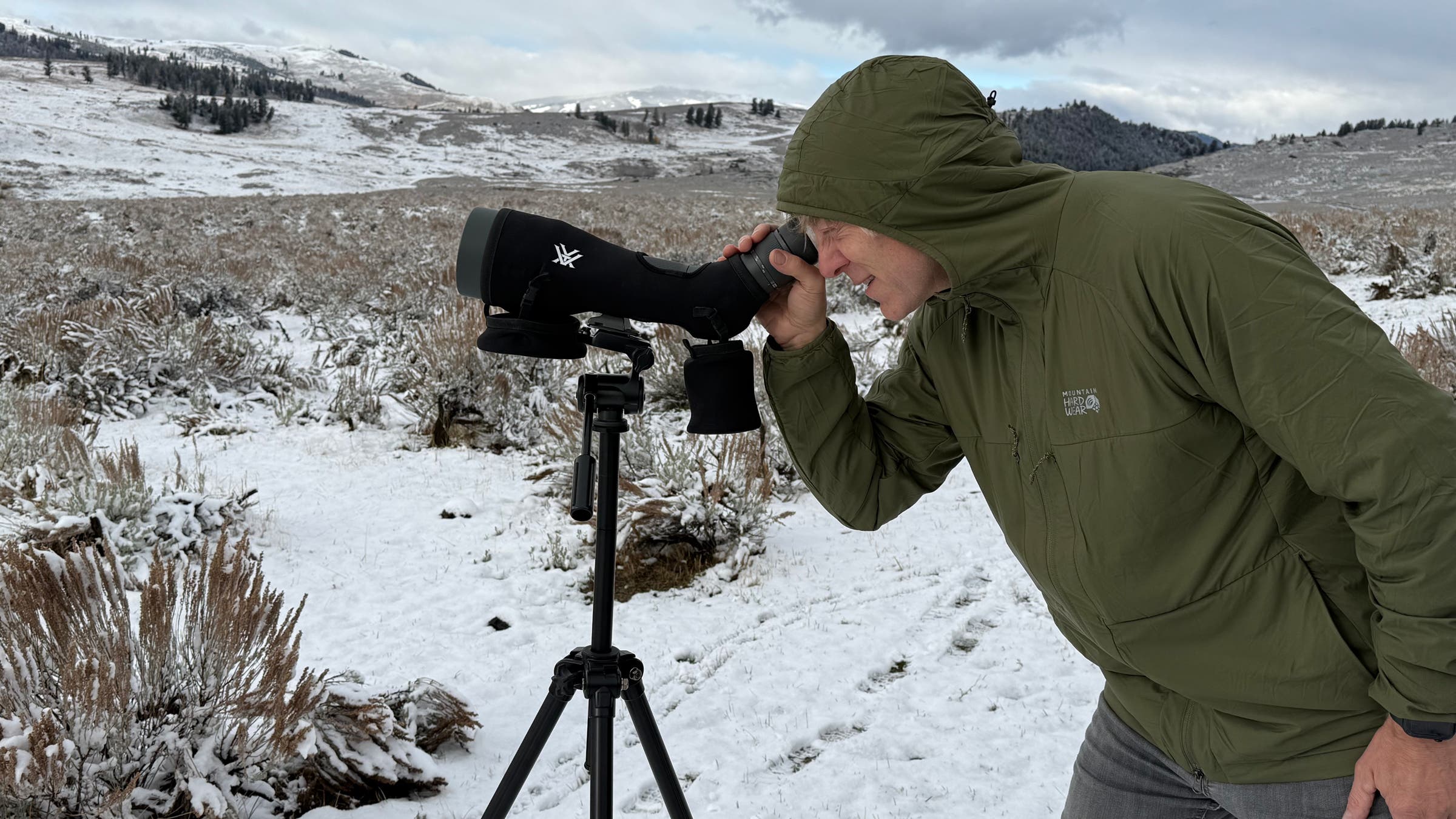
The Kor Airshell was enough to keep us warm bootpacking and skinning in temps in the teens, but breathed well enough to regulate our testers above freezing. Mountain Hardwear’s soft AirMesh liner helped move moisture away from our base layers, keeping us dry and toasty. (In colder conditions or at rest, we slapped a shell or puffy on top.)
The 20-denier Pertex Quantum Air stretch ripstop outer fabric withstood a year’s’s-worth of abuse from pack straps, a climbing rack, and shouldered skis, and the fabric was knit tightly enough to cut down 30-mph gusts. A DWR helped shed snow and drizzle, but not much more. At 13 ounces, it’s very lightweight, but still boasts a full feature-set: Four zippered pockets, an elastic drawcord at the hem, and a two-way zipper for compatibility with a harness and belay device.

How to Choose Midlayers
Insulated midlayers are as diverse as the activities and conditions you’ll use them for. The jacket or hoodie’s fabrics and insulation determine warmth, breathability, and weather protection. Here’s how to narrow the dizzying mountain of options:
Warmth
In general, midlayers are either fleece-backed, layered with synthetic or down fill, or some combination of the two. Synthetic and wool insulators will keep you warm, even when wet, while down loses its loft, making it a poor choice for most activities except on particularly frigid, low-output adventures. The heavier the synthetic or down fill (typically in grams), the warmer your layer will be. Fleece-backed midlayers tend to breathe the best (especially technical fabrics like Octa, Polartech Alpha, and Primaloft Active), but won’t be as warm as a layer that includes some sort of insulated fill.
Weather Protection
If you plan to wear a wind- and waterproof shell over your midlayer, you won’t need to worry about weatherproofing chops. If you don’t intend to carry a shell, however, look for a piece that sports a wind-and-rain-resistant outer layer (or at least body-mapped panels) and a DWR chemical treatment.
Activity Level
Planning to amp up the cardio for extended periods of time? Look for a more breathable, sweat-wicking midlayer. In general, fleece-backed jackets are the most air-permeable and many have a quick-wicking inner fabric to help move sweat-induced moisture away from the body (dangerous for hypothermic conditions.) Tightly-woven fabrics and midlayers with continuous down or synthetic insulation will offer minimal breathability for high-output adventures like skinning uphill and winter running.
How We Test
- Number of testers: 13
- Number of products tested: 72
- Mountain ranges represented: 20 (Absaroka, Alaska Range, Andes, Bitterroots, Chugach, French Alps, Front Range, Gore, Greens, Monashees, Mosquito, Park, Teton, Salmon River, Sawatch, Selkirks, Smoky, South San Juans, Wasatch, Whites)
- Toddlers towed in a chariot: 1
Last winter we found that more than half of our test crew were teachers. You’d think we’d want a slightly more diverse group of professions, but in reality these were our ideal evaluators. For one thing, their need to get out skiing, running, cycling, and climbing was uncompromising, if only to shake off a difficult school year. That meant that they went out no matter the conditions, pushing these garments to their limits. For another thing, they are used to grading stuff, and the change of criticizing the fit of a hood or odor-fighting properties of a fabric was a welcome change from skewering another middling essay on Moby Dick.
For this test, we put insulated midlayers of every stripe through the rigors of lift-accessed and backcountry skiing, climbing, snow biking, Nordic skiing, and tailgating. Conditions ranged from single digits in Wyoming, to rain in North Idaho, to 70 mph gusts on New Hampshire’s Mount Washington. The 72 midlayers worn included shelled puffies, traditional down sweaters, synthetic hoodies, lightly-insulated windbreakers, and a couple of vests. Our testers graded warmth, breathability, fit, durability, sustainability, and price.
Meet Our Lead Tester
Frederick Reimers was raised at canoe-tripping summer camp in Ontario, Canada, and had completed a trio of 40-day expeditions before he even shipped off to college. When his parents sold the camp and moved to Jackson Hole in the 1990s, he followed. He has made a career from scribbling about outdoor culture and gear ever since. In addition to Outside, his work has appeared in The New York Times, Smithsonian, Bloomberg Business, and Ski. While Wyoming’s long winter does feel a little long round about April, that makes it the perfect place to test layers. Find Reimers testing them on ski slopes, Nordic tracks, and bitterly cold pre-dawn dog walks around town.